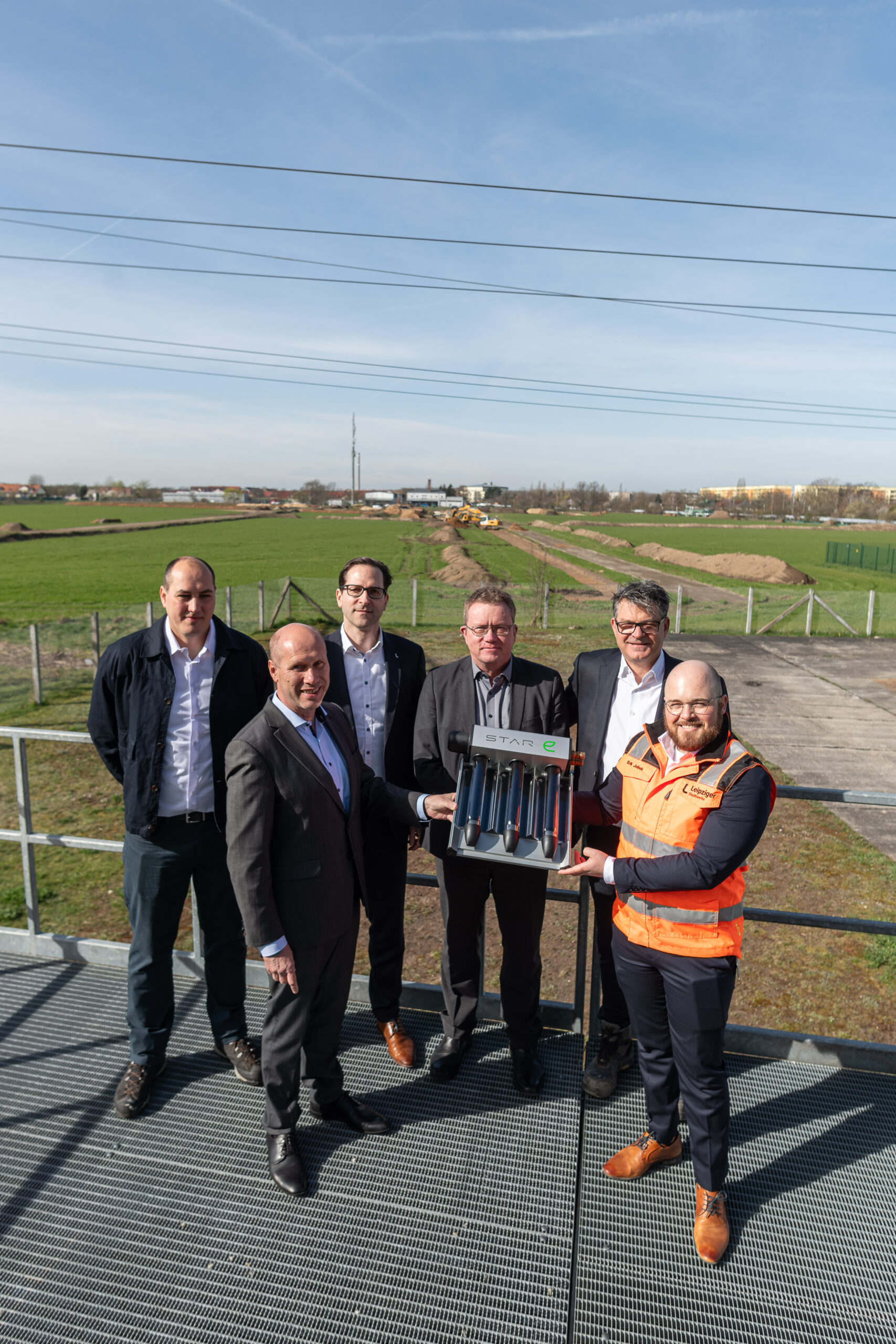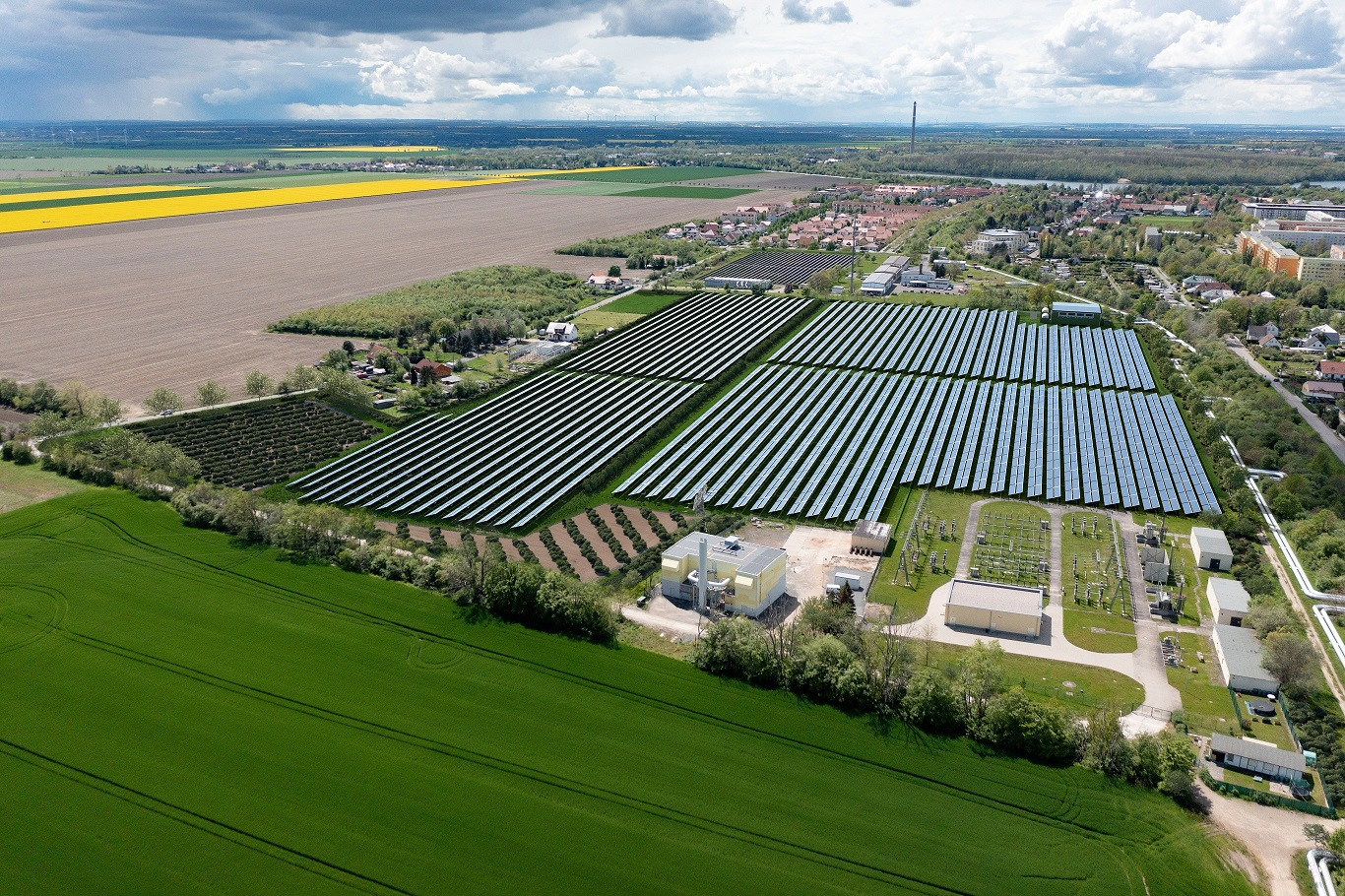“Green” district heating for Leipzig: Leipziger Stadtwerke starts construction of the biggest solar thermal energy plant in Germany
How can Leipzig’s heating supply become climate-neutral? This is what Leipziger Stadtwerke investigated as part of the SPARCS sub-project “CO2-free district heating in the west of Leipzig”. Germany’s largest solar thermal energy plant, the planning for which was part of the sub-project, will make a significant contribution to this in the future. Leipziger Stadtwerke started building the plant in Leipzig’s Lausen district in March 2024 – together with Ritter XL Solar, the market leader in large solar plants in Germany. Following completion at the end of 2025, the plant will cover up to 20 percent of all of Leipzig’s heating needs every day, particularly in the summer.
To this end, it will, on the one hand, be connected to the Leipzig district heating network, which has long constituted one of the main pillars of the municipal heating supply. In addition, it will be integrated into the “virtual power plant” that Leipziger Stadtwerke has also developed within the context of SPARCS. This digital platform brings together multiple decentralised generating plants to form a larger virtual generating unit. All of the information from the individual plants comes together here so that the energy supply and demand can be precisely coordinated. This allows for the capacities of each individual plant to be optimally used, making their operation even more efficient.
The intelligent system with which Ritter XL Solar will be equipping Germany’s largest solar thermal energy plant also aims for maximum efficiency: “The technology measures the solar radiation in the collector array and controls the flow rate of the water which is heated in the collectors accordingly,” explains Ritter project engineer Paul Gaspar.”The less the sun is shining, the slower the water flows in order to heat it. The vacuum collector also works like a thermos flask – hot inside, cold outside.”
The location of the 14-hectare site in the southwest of Leipzig also ensures optimal heat yields, as Stadtwerke Project Manager Erik Jelinek explains: “This location is perfect because the orientation of surfaces is good, because there are already appropriately sized district heating pipelines running right past it, and because existing sites such as our Leipzig west cogeneration plant are right nearby.”
The area has previously been used for agriculture, now the diggers and construction workers are getting stuck in – but nature will be able to return to the space under the collectors after the construction period, says Jelinek. Karsten Rogall, Managing Director of Leipziger Stadtwerke, adds: “For us, sustainability means considering and driving both reliability of supply and climate protection.” Natural management of the area will be deliberately used here in order to demonstrate how renewable energies and species protection can be combined: The majority of the area will be unpaved surfaces such as flowering meadows, fruit trees and mixed hedges. A herd of sheep will be used to keep the greenery under and between the collectors under control. “We can say from experience that rabbits, hares, hedgehogs, insects and birds will also make their home here,” reports Matthias Johler, Managing Director of Ritter Energie, which the Ritter XL Solar brand is part of, and summarises: “Renewable energy and space for nature – both aspects come together here.”
Start of construction with solar collector in front of the future solar field (from left): Paul Gaspar (Project Manager Ritter), Karsten Rogall and Dr. Maik Piehler (Managing Directors of Leipziger Stadtwerke), Dr. Gerd Lippold (Energy State Secretary Saxony), Matthias Johler (Managing Director Ritter) and Erik Jelinek (Leipziger Stadtwerke)


